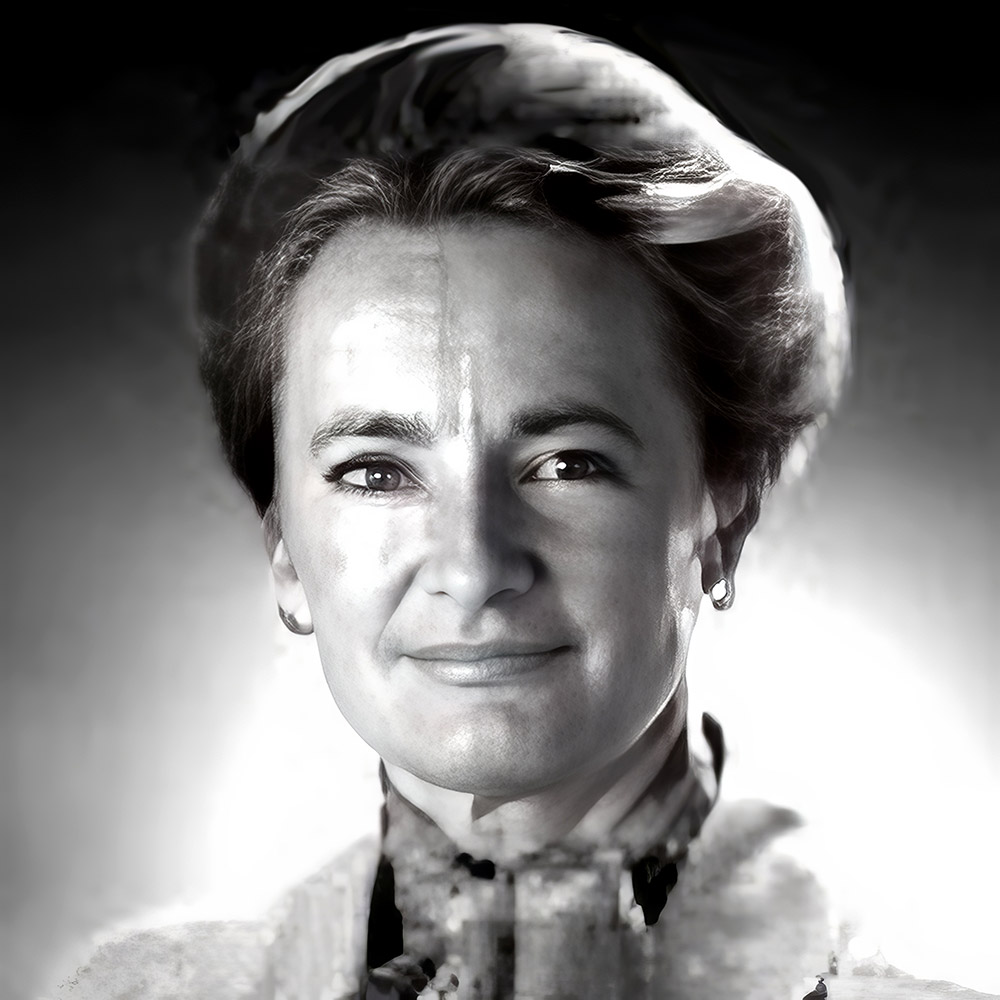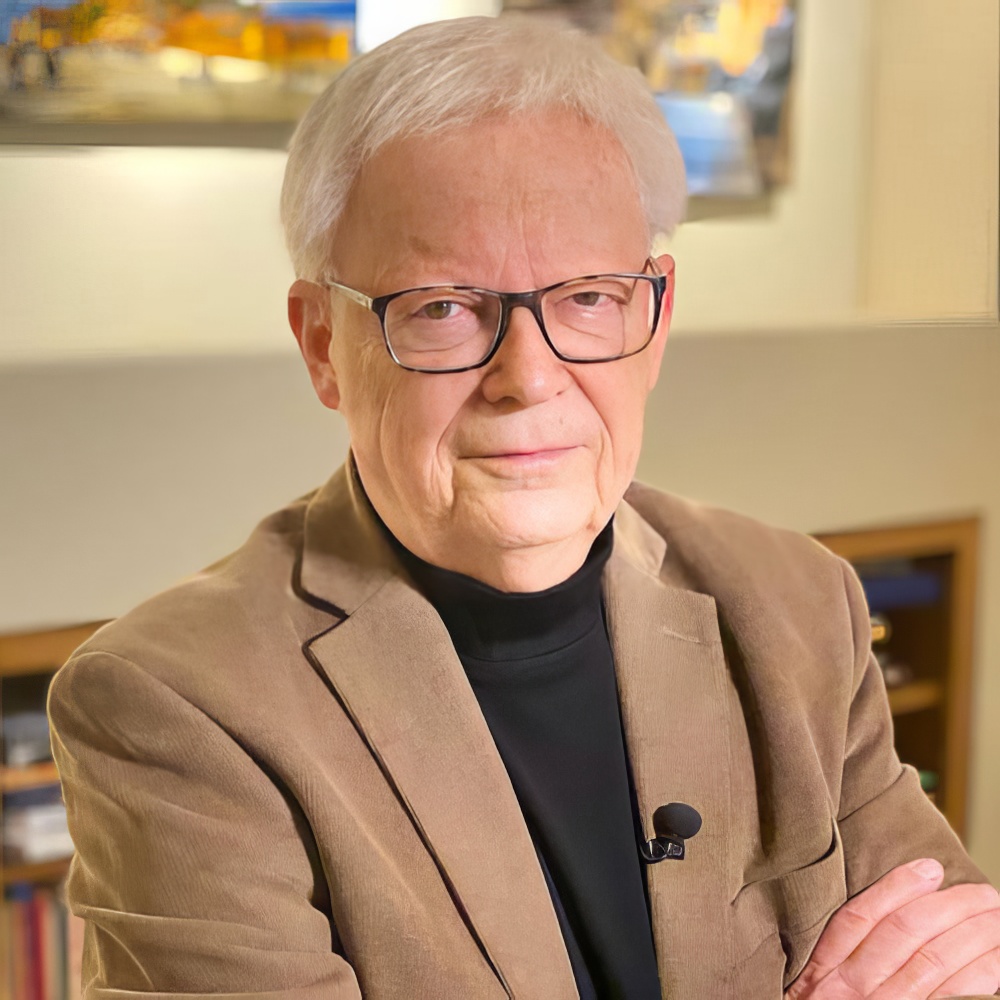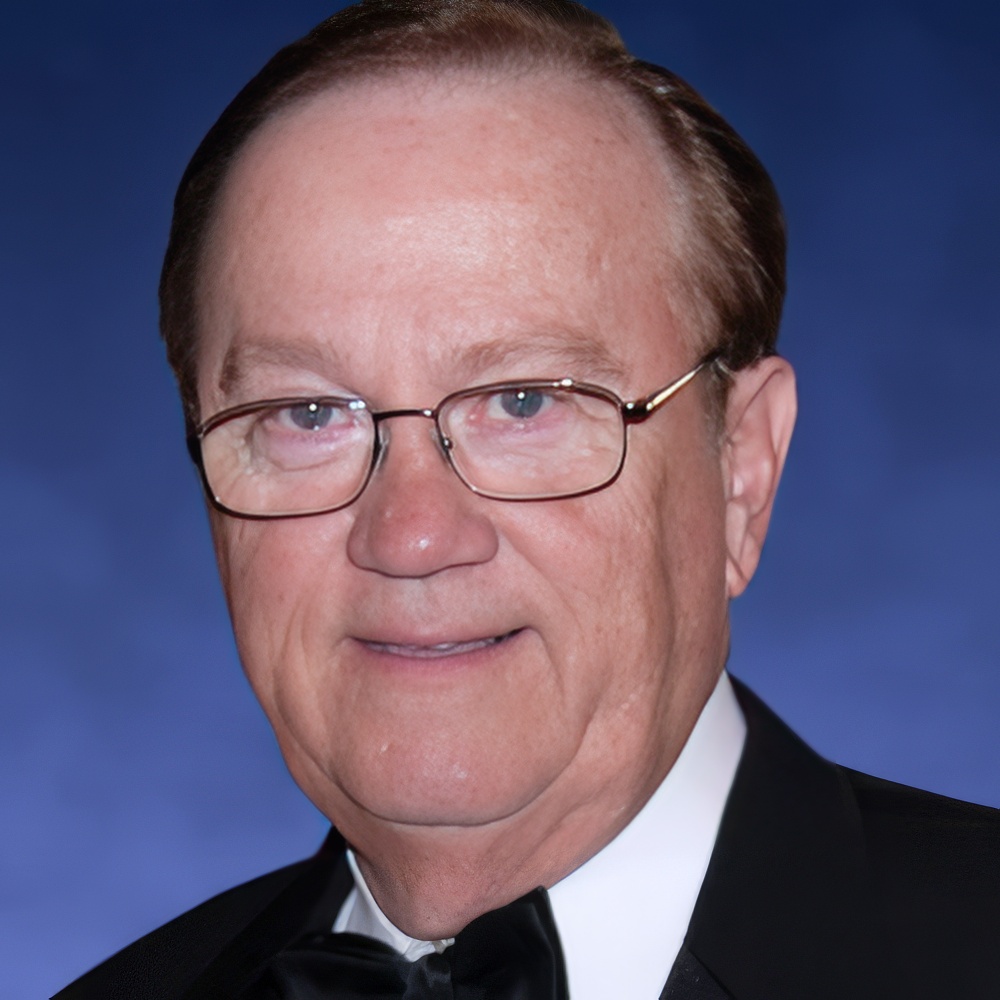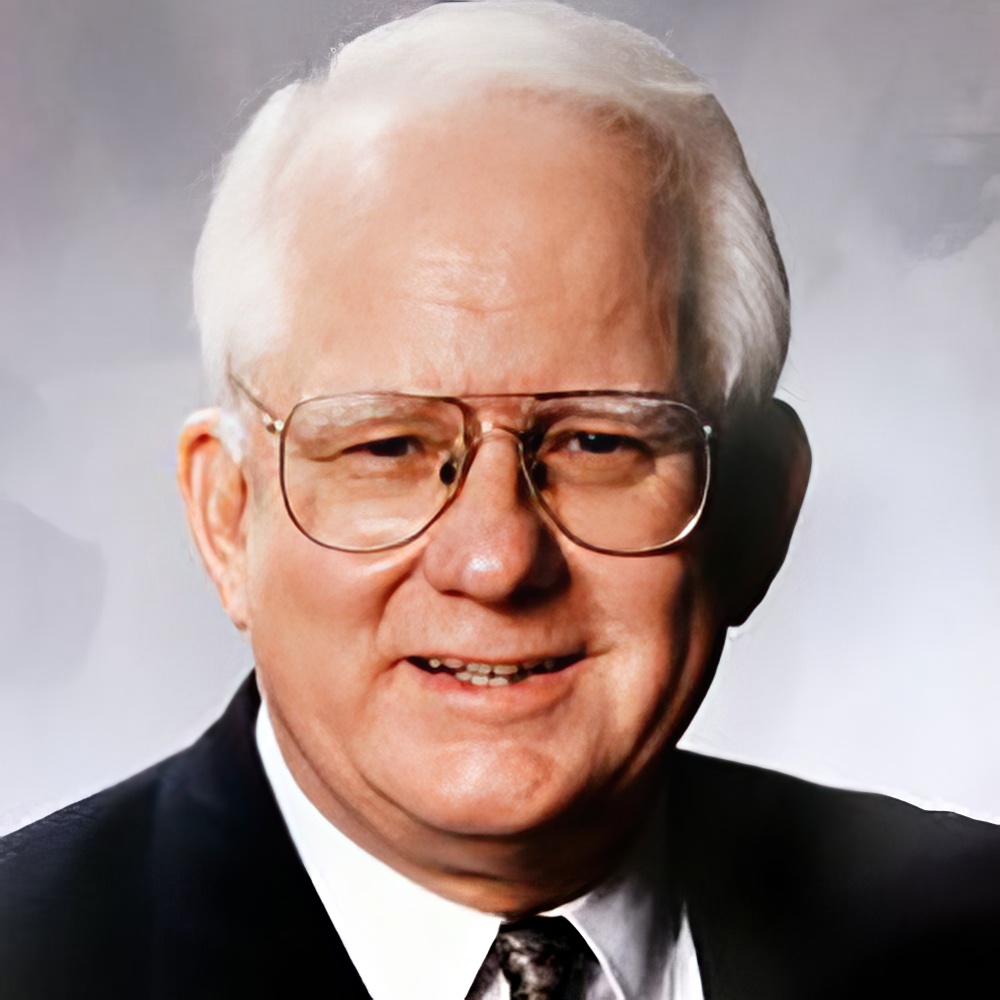
Gary England
2000
SILVER CIRCLE INDUCTEE

In a state where the weather is quickly changing and life-threatening, Gary England, Chief Meteorologist at KWTV in Oklahoma City, is literally a lifesaver. Viewers trust him, and they know that he knows what he is talking about. His innovations, developed for Oklahoma, are now common tools for weather prediction and safety throughout the entire United States. If you want to see for yourself what Gary has initiated, simply turn on your TV during a severe storm.
In 1981, Gary became the first meteorologist in history to use Doppler radar for direct warnings to the public. Official warnings at that time usually came after the storm or with too little time to take shelter. In 1990, he developed First Warning, an automated severe weather warning computer system, which provides viewers with instantaneous weather warnings from the National Weather Service.
In 1991, Gary developed StormTracker, a severe weather tracking and projection computer system now in use nationwide. In 1999, he developed Storm Signal, a computer-based severe weather warning system that allows a person to receive warnings at the same time as the warning is appearing on a television screen.
On May 3, 1999, the most powerful and devastating tornado ever recorded slammed into Oklahoma, an event that could have resulted in hundreds of deaths. Due to Gary England’s efforts and innovations, Oklahomans had ample time either to flee their homes or properly prepare themselves for what was to hit. Over the years, Gary has become an institution in Oklahoma, but his impact reaches far beyond. There is not a person reading this who has not in some way or another been the beneficial recipient of all that he has introduced into electronic weather forecasting.
Board of Governors Award Recipient: 1997

Trudy Fowler
2000
SILVER CIRCLE INDUCTEE

Trudy Fowler is an institution throughout Colorado, and indeed, throughout the United States and Russia. She began her career in 1965, volunteering for Colorado’s first PBS station, KRMA-TV, and embarked on a lifelong journey of nonprofit awareness. For more than 30 years, she played a key role in the development of a small, under-funded local public television station, which today is known as Rocky Mountain PBS, a statewide network. She has raised funds, recruited volunteers, lobbied extensively, established cooperative community relations, and become one of the most recognized personalities in Denver. Through her devotion to Rocky Mountain PBS, she has contributed the gift of public television to the community — helping to educate and entertain all of Colorado’s communities. Her gifts do not stop within the confines of Colorado’s borders. They extend to the far reaches of Novgorod, Russia, where she visited and sponsored producers of a fledgling public television system in that country. She instructed them in all aspects of fundraising, in building a volunteer corps, and developing steering committees to help them along their journey. In 1998, Trudy received the Citizen’s Democracy Corporation Certificate of Appreciation for serving as an advisor to Public TV in Novgorod, Russia. She has served as a member of the Board of Directors of the Colorado Federation of the Arts, the Advisory Board and Marketing Committee for Denver Metro Gives, the Executive Committee of the Denver Partnership Executive Network, the Colorado Tennis Association Board of Directors, and the Executive Committee of the Colorado Potter’s Guild. She was instrumental in the creation and development of The Hospice of St. John, helping to develop their bylaws, a board of directors, and initiating a fundraising campaign, calling upon all her resources to help this hospice. She has helped unify people with mission; mission with vision, and throughout has not overlooked the basic principles of the community. Her respect and love for the community are responsible for her success, and it is that which drives her.

Larry Hatteberg
2000
SILVER CIRCLE INDUCTEE

For 36 years, Larry Hatteberg has brought a special kind of television to Kansas. His constant search for ordinary people, whose stories illuminate larger issues, puts him in a position to develop a personal relationship with Kansas viewers. Throughout the nation, he is known as a video storyteller who can "touch" people with his television journalism. His "Hatteberg's People" series is the longest-running television feature in Kansas. His recently published book "Larry Hatteberg's Kansas People," based on the television series, is a best-seller. It profiles 75 Kansans who make the state a unique place to live. His second book, a sequel called "More Larry Hatteberg's Kansas People," profiles 85 additional Kansas people and was published in 1994.
Larry’s television career began at KAKE in 1963 when he started as a part-time film lab technician. He has been a photographer, chief photographer, assistant news director, executive news director, and is now the Managing Editor of KAKE News and the prime-time co-anchor of KAKE News at Five. He is also the co-host of the local segments of the Jerry Lewis Muscular Dystrophy Labor Day Telethon. There are few major awards Larry hasn't won. Twice he was named National Press Photographers Association (NPPA) Television News Cameraman of the Year. He is one of only a select few to have received the award twice. He has also received three additional awards from the NPPA. In addition, Larry has received over 85 local, state, and national awards for television news photography, reporting, and for helping to set broadcast journalism standards. He was also a national semi-finalist for NASA's Journalist in Space program.
A native of Kansas, Larry's interest in photography began in high school where he was the photo-editor of the school newspaper and yearbook. He went on to attend Kansas State Teachers College and Wichita State University. He and his wife live in Wichita.

Bill Thrash
2000
SILVER CIRCLE INDUCTEE

For nearly fifty years, Bill Thrash has been associated with quality television programming in Oklahoma. He is a community leader who constantly leverages his media and arts community network to improve the quality of life for Oklahomans through a variety of public events. Bill began his career in the production department of a small Oklahoma town's only TV station. He moved up in market size as he advanced through the ranks, eventually landing at the ABC and NBC affiliates in Oklahoma City. For the last twelve years, Bill has been a creative force behind a statewide public TV network that frequently provides programming to the national PBS audience.
In the 1970s, Bill directed "The Stars and Stripes Show starring Bob Hope," one of the first programs created and produced in Oklahoma City and seen nationally on NBC. He also produced several country music specials for national broadcast, launched the innovative "PM Magazine" in Oklahoma, and produced and directed numerous other television programs. These days, Bill creates new programs for OETA and produces the new "Lawrence Welk" specials as well as repackages the original Welk programs. Along the way, Bill has been nominated for several Emmys and has picked up a few for some great programs.
Through the years, Bill has been a mentor for those searching for excellence in broadcasting. Bill was the first to hire Mary Hart when he brought her to Oklahoma City for a talk show. He also worked with Bob Dotson on a project in Oklahoma City that earned Bob his first Emmy. Other names are less well-known outside of Oklahoma, but collectively, they have earned many Emmys and other awards. They all remember the time they were privileged to work with Bill Thrash.
Gold Circle Inductee: 2010

Bob Turner
2000
SILVER CIRCLE INDUCTEE

Bob Turner is recognized around the world as one of the foremost experts in broadcasting technology. After leaving the seminary in the early 1950s, Bob Turner joined WFAA-TV in May of 1953 as a camera operator and floorman. Four years later, he became a director. In 1963, Turner directed the first "live" cut-ins on Dallas television of the John F. Kennedy assassination, staying on duty for 56 straight hours and feeding the entire ABC television network. At WFAA, Bob researched, and in some cases, participated in the initial design of some of the most advanced forms of broadcast technology within a television facility in the Southwest. In 1970, Turner became the manager of WFAA. In 1981, he served as the station's systems engineer for capital planning, and he continued in that capacity for fifteen years. In 1995, Turner became the director of Capital Planning for all Belo television properties. That same year, he was honored by his peers as the Employee of the Year at WFAA-TV. In 2000, he received the William H. Seay award, a Belo award for integrity, loyalty, journalistic standards, and community commitment. In 1998, Turner led the charge as WFAA-DT signed-on as the nation's first station to broadcast high-definition television on a VHF signal. It was his technical leadership that provided the vision for this moment in broadcast history. Bob once said he had lived through "everything from black and white to color, film to videotape and beyond." After 47 years of broadcast innovation and excellence, Bob Turner continues to push the envelope technically and creatively, but he is also well-known and respected for his willingness to help and encourage others. His mentoring skills have helped launch many a career, and a list of his protégés reads like a "Who's Who" in Texas broadcasting and across the nation.
